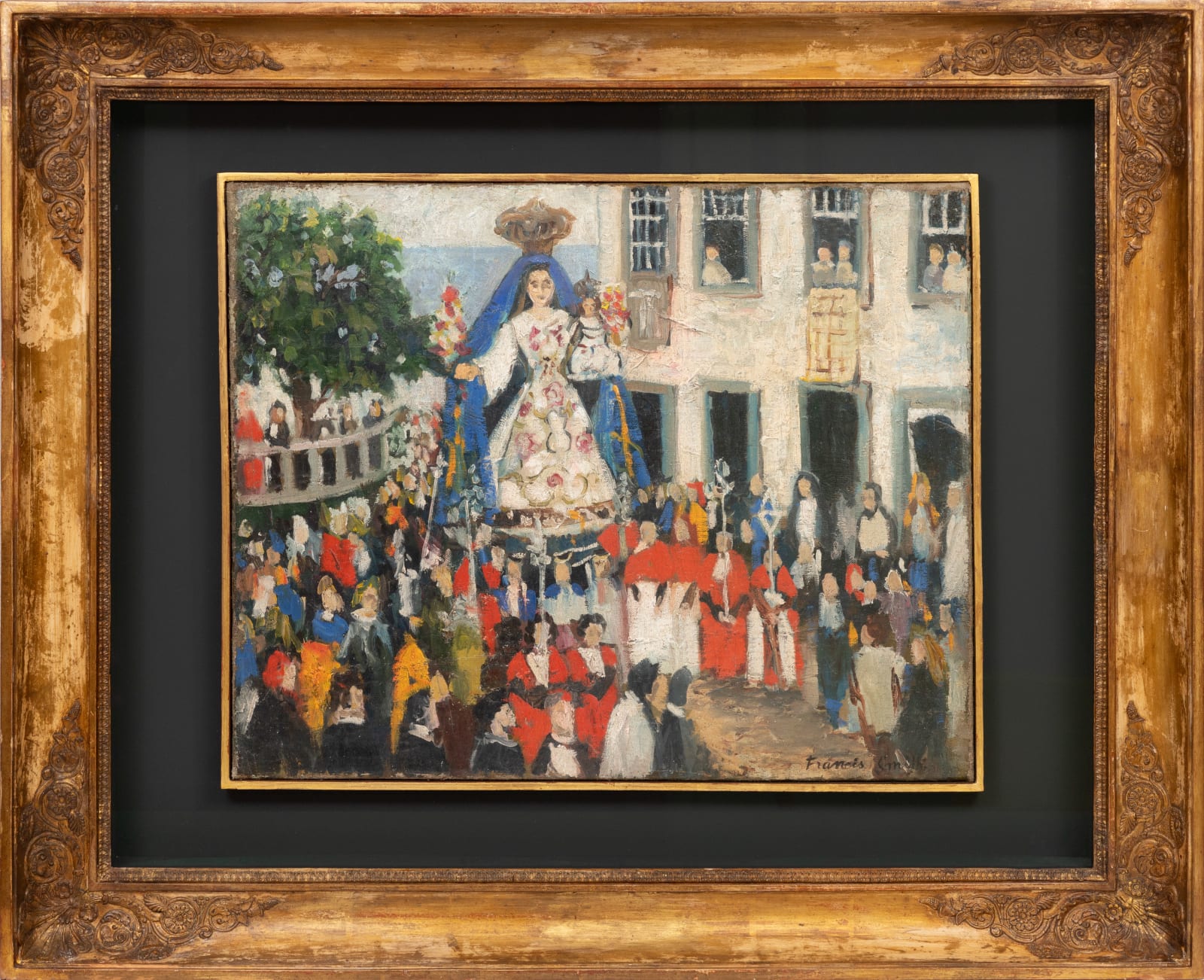Francis Smith
“Procissão” most likely corresponds to the painting described as “Procession au Portugal”, exhibited at the 1929 Salon d’Automne. A renowned and high standing artist in the Parisian between the wars modernist scene[1], Smith splits his introspective creation into two fundamental leitmotifs that reflect the duplicity of his emigrant imaginary[2]: the French modern life – of close temporality proper to the adopted fatherland; and the Portuguese popular culture – the remote past symbolic of the abandoned nation.
Paradigmatic of Francis Smith’s body of work on Portuguese subject matters, the painting herein described is peopled with the vitality of his youth memories, diluted by time, and metamorphosed by the visual contact with other imagery, particularly photographs, embodying the ideal of a sensitive mutating memory that dialogues with the emotional, and material, present condition. Procissão resumes the traditional imaginary of the exuberantly fervent Portuguese catholic processions, in which a popular pious crowd joins the religious image paraded on its litter.
As in other Smith’s paintings, it evidences a mixture of specific figurative elements, like the river Tagus in the background, with other, more generic details associable to a Portuguese iconographic identity - the whitewashed houses, red attired clerics, or the exuberantly ornamented Madonna’s garments. In this respect, more than defining a specific episode, the composition synthetizes pictorially an imprecise set of visual references, crystallised, but equally diluted, in the artist’s memorialist corpus. The unprecedented partiality for the cult of the Virgin Mary, a tribute to his profoundly devout mother, does also stand out from his work. In this instance, the depiction of a blue cloaked and crowned Madonna might configure the Immaculate Conception, Patroness of Portugal.
Such nostalgic imaginary is materialised by the aesthetic resorting to a voluntarily naïve technique, of spontaneous raw and clean colours, and concise, apparently crude drawing, in which the elements naturalistic proportions are openly disregarded, while adopting an isometric projection that builds an illusion of depth. Accordingly, the Virgin Mary is clearly disproportionate comparatively to the crowd surrounding her, portrayed by undefined multiform blots that endow the composition with a sense of kinetic energy, and the lines defining the right-hand side building doors and windows are intentionally oblique, as if pretending to replicate the carelessness of a childish drawing. This search for the candid purity of children’s artistic vision, typical of modernist primitivism, merges, in Smith’s work, with the quest for the earliest images and emotions directly linked to his Portuguese childhood.
Jorge Gonçalves da Costa, November 12th, 2024
[1] Francis Smith exhibited in the most relevant Parisian Salons (Automne, Indépendantes, Tuileries) and galleries, being one of the renowned modernist gallerist Berthe Weill’s, protégés, and close friends with Modigliani and Foujita.
[2] Born in Lisbon, Francis Smith departs for Paris in 1902 to study in the Montparnasse studios. Married to a French sculptress artist – Yvonne Mortier, he only very seldomly returned to Portugal. Building a major career in France, Smith became the Portuguese artist of higher prominence in the Parisian circuits, in the first half of the 20th century.
Join our mailing list
* denotes required fields
We will process the personal data you have supplied in accordance with our privacy policy (available on request). You can unsubscribe or change your preferences at any time by clicking the link in our emails.
